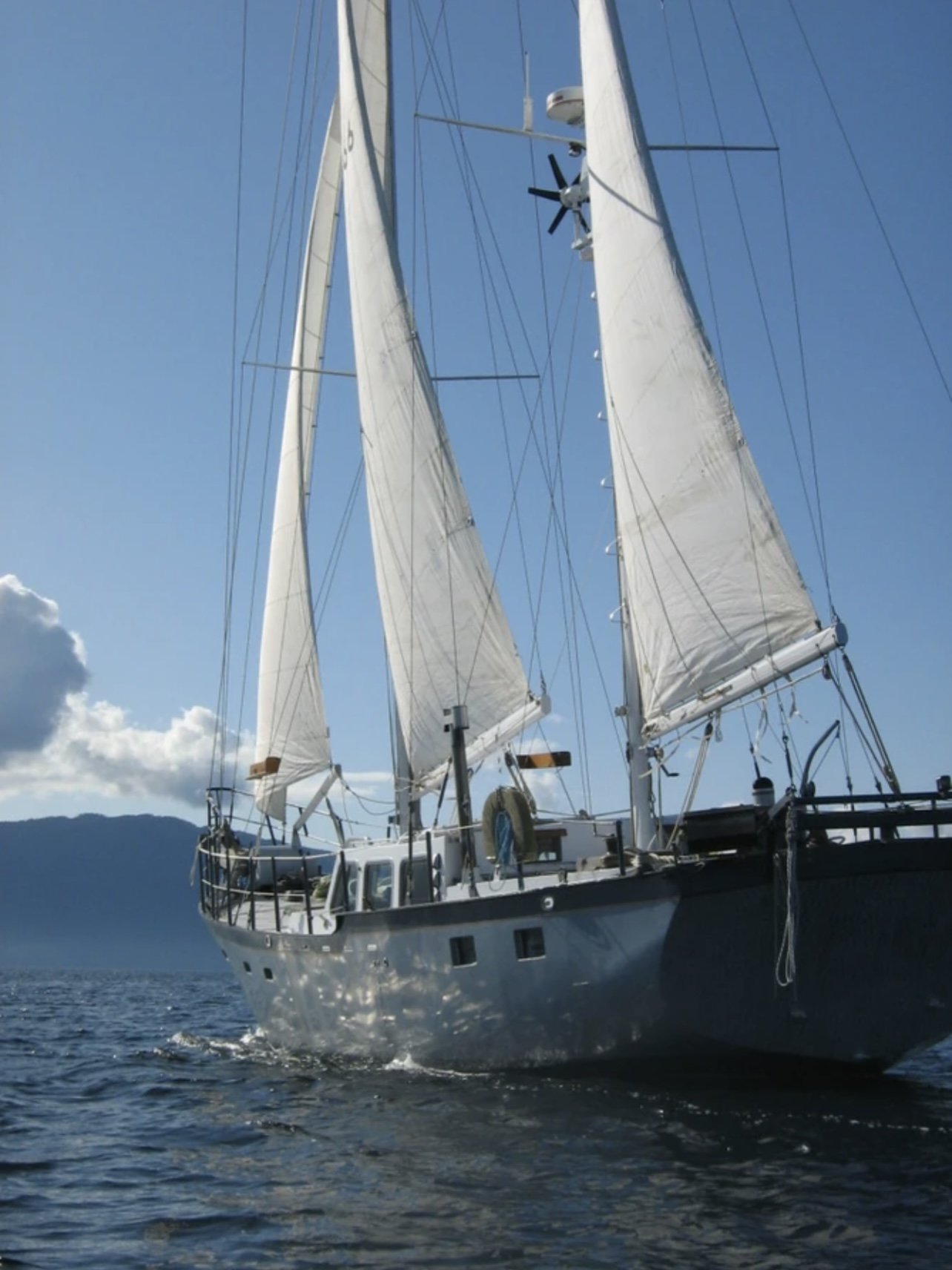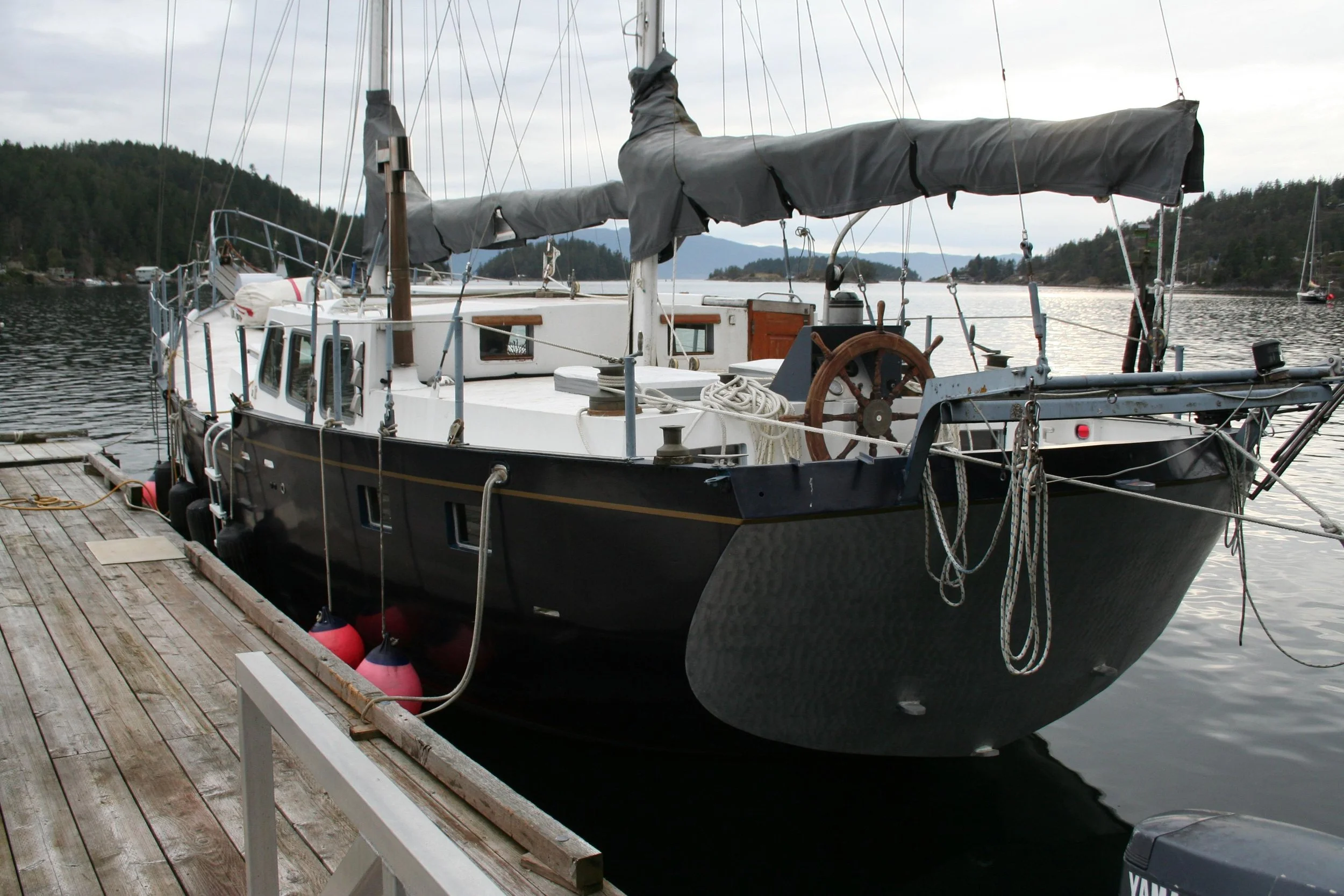














Salome – A Mainsail Ketch RIG & the CORE of Our Expedition
"The Pirate Ship," as she is referred to by our kids, will serve as the cornerstone of our sailing expedition across the Seven Seas. Salome offers two full-size bed cabins, a v-berth with twin bunk beds, two heads, an aft galley/dinette, as well as a stunning pilot house. When it comes to safety, Salome truly stands apart. She boasts a 5086 marine-grade aluminum hull, a 300-gallon fuel capacity, a single through-hull, a hydraulic water maker, a hydraulic windlass, a diesel furnace, and an electric bow thruster.
Salome was designed by legendary naval architect Ed Monk Sr. and was built in 1975 at the Tacoma WA shipyards. The original owner requested a vessel built with classic lines, stout scantlings, and to be capable of circumnavigation. Most importantly, he wanted Salome to do so as safely as possible. Ed’s final design borrowed from an existing fleet of commercial tuna fishing boats he had drawn up a few years earlier. The Skookum series as they became known, proved to be rugged ocean-capable fishing vessels that still roam the Pacific from Alaska to Tahiti. Following her commissioning, Salome successfully completed a 5-year circumnavigation.
In 2008, began a meticulous refit. Over 2 years the owner poured his very soul into the building and breathed new life into her. The six-figure refit included a new low emissions 150hp turbo diesel, the hull, and rigging were entirely refurbished, all mechanical systems were replaced and updated, and the interior was completely renewed.
Today, Salome has been methodically maintained since her refit but in preparation for our trip, she will need a few upgrades and modifications. Our goal is to fit her with a new electronics package, replace the standing and running rigging, add a mainsail and headsail furling system, and modify the companionway and cockpit to be better suited for high-latitude sailing.
WHY WE CHOSE A KETCH RIGGED SAILBOAT
Ketch rigs are often considered better at heavy weather sailing due to several design features that provide enhanced stability and sail management in challenging conditions:
REDUCED SAIL AREA - Ketch rigs have two masts - a taller mainmast and a shorter mizzenmast located behind the mainmast. During heavy weather, sailors can reduce the sail area by lowering or reefing the sails on both masts. This results in a lower center of effort, which helps stabilize the boat and reduces the risk of excessive heeling (leaning) in strong winds.
BALANCED SAIL PLAN - The placement of the mizzenmast in a ketch rig creates a balanced sail plan. This means that the force generated by the sails is distributed more evenly between the main and mizzen masts. As a result, the boat is less likely to be overpowered and more easily controlled in heavy seas and gusty winds.
VERSATILITY & CONTROL - The dual-mast configuration of a ketch rig provides more options for sail combinations. In heavy weather, sailors can set smaller sails on the main and mizzen masts, allowing for better control and adaptability to changing wind conditions.
EASY HANDLING - Smaller sails on the mizzen mast in a ketch rig make it easier for the crew to handle rough conditions. The mizzen sail can act as a stabilizing force and can even be used to help heave-to, a technique used to stop or slow the boat's forward motion and wait out severe weather.
SAFETY - The ability to reduce sail area quickly in heavy weather helps maintain the boat's stability, reducing the risk of capsizing or broaching.
COMFORT - The reduced sail area and balanced sail plan in a ketch rig can result in a smoother, more comfortable ride on heavy seas.
While ketch rigs offer advantages in heavy weather sailing, it's essential to note that no rigging configuration is foolproof. The skill and experience of the sailors, proper seamanship, and careful decision-making in response to weather conditions are equally critical factors in ensuring the safety and success of any sailing venture, particularly in challenging weather.
